This mango jelly dessert is an easy jelly recipe. Made using fresh mango puree and agar agar powder, this homemade mango agar agar is quick, light and refreshing, and absolutely delicious.
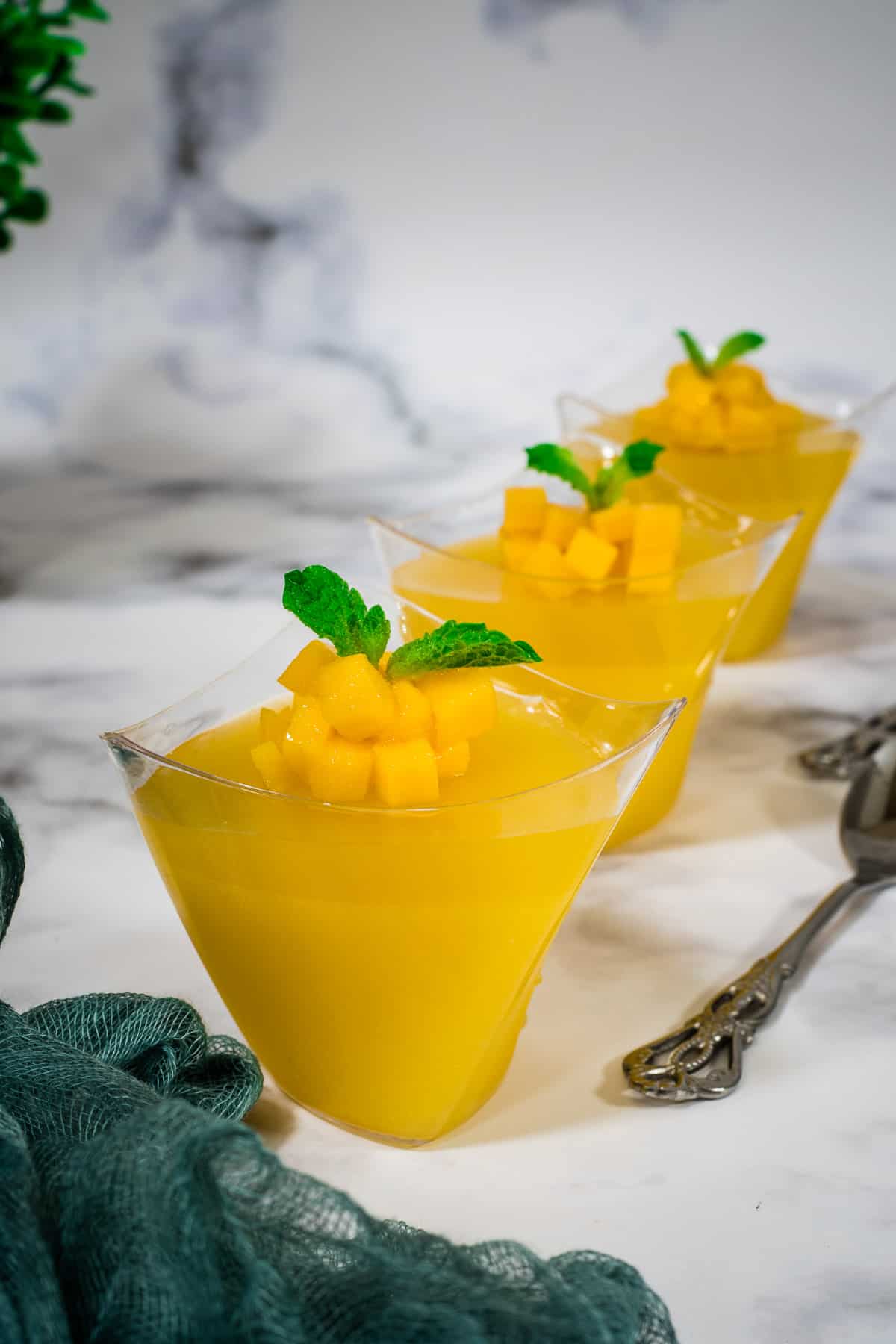
You only need 5 simple ingredients to make this easy mango jelly - mangoes, agar agar powder, water, lemon juice and cream. Cooked and poured into individual jelly cups, this 2 layer mango jelly is a perfect dessert for mango lovers.
If you are looking for a basic agar agar jelly recipe, start with this simple agar agar jelly recipe. And for more options, check out this coconut jelly, coffee jelly, fruit jelly cups and fruit jelly cake.
Jump to:
❤️Why You Will Love This Recipe
- You only need 5 simple ingredients to make the jelly.
- It is made using fresh mangoes.
- It makes a cooling, light and refreshing dessert.
- It is perfect for vegetarians.
What is Agar Agar
Agar agar is a type of jelly, derived from seaweed. It is almost similar to konnyaku jelly and gelatin, with slight differences is texture.
Agar agar is often found in powder form or in strips/flakes. You can typically find it in Asian supermarkets or online food stores.
Given that agar agar jelly is plant based, this mango jelly recipe is a perfect dessert option for vegetarians. Substitute the fresh cream with coconut milk and this mango dessert is perfect for vegans too!
📋Ingredients
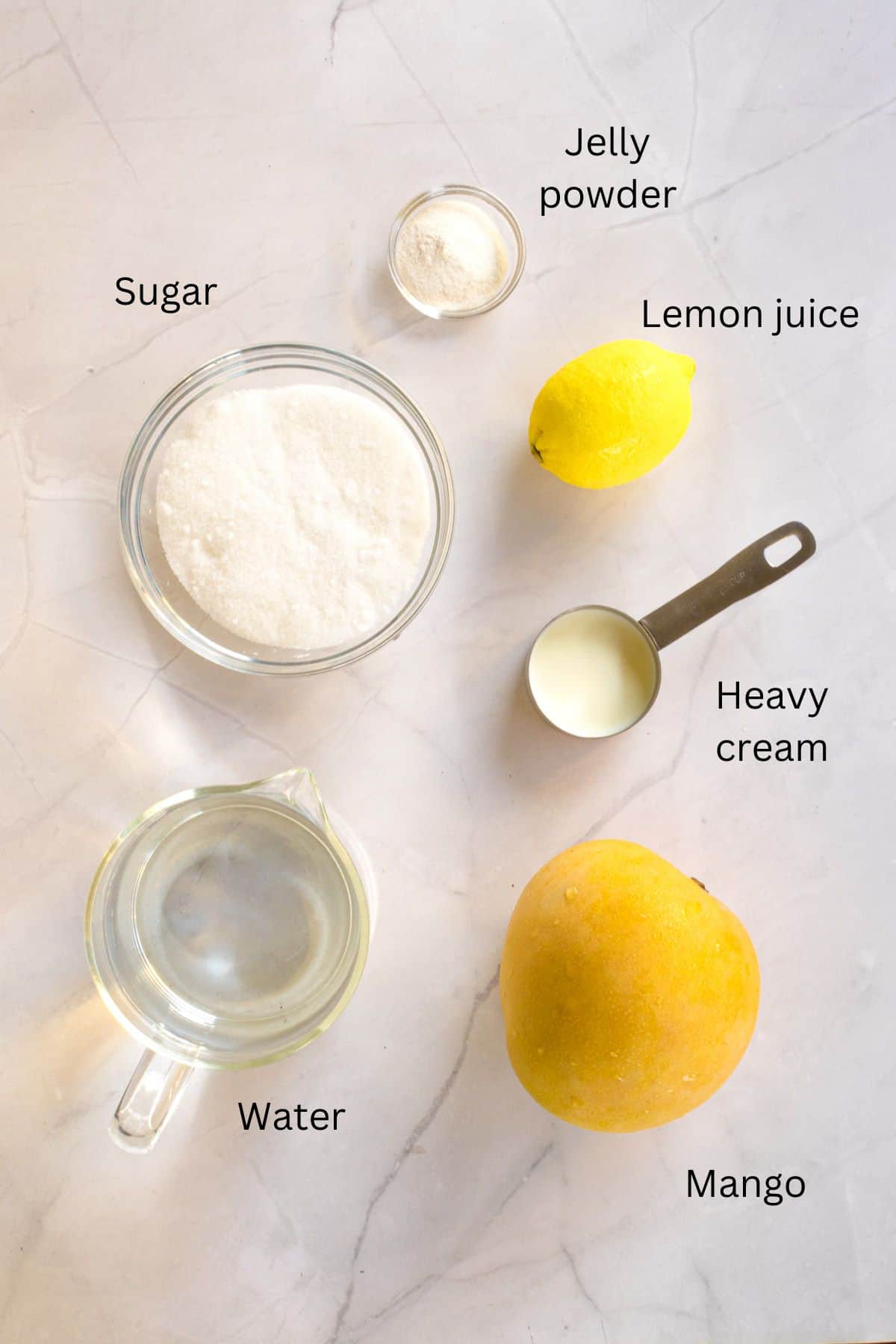
- Mangoes - Fresh mangoes are the best. Choose well ripened mangoes. Unripe, green mangoes will not be suitable for this jelly. If using frozen mangoes, thaw before using.
- White sugar - both coarse sugar and granulated sugar works for this recipe. Granulated sugar will dissolve quicker than coarse sugar. Colored sugar like brown sugar is not suitable as it will change the color of the jelly.
- Agar Agar powder - this is white is color and looks almost like gelatin powder. For ease of measuring, it is advisable to purchase this in small packets of 10g.
- Heavy cream - adds creaminess to the jelly.
- Lemon juice - enhances the taste of the jelly. Use fresh lemon juice and strain before adding to the jelly to remove any seeds and pulp.
- Water - to cook the jelly. Use filtered water.
*Refer to the recipe card below for full list of ingredients and exact quantities. For best results, use a digital kitchen scale where applicable*
🧾Substitution and Variation
- Heavy cream can be replaced with coconut milk. Use exact same quantity.
- Agar agar powder can be substituted with konnyaku jelly powder. Use exact same amount.
- Lemon juice can be replaced with lime juice.
- Instead of pouring the jelly into individual cups, you can make mango jelly cake by pouring it into a single large mold with one liter capacity. To prevent the jelly layers from separating when unmolding, make sure the the jelly solution for the second layer is hot when pouring onto the first layer. Once set, remove from the mold and cut into jelly slice or cubes or bars before serving.
- This jelly recipe can be used to make layered jelly with a combination of mango and other flavors. To do this, divide the cooked jelly solution (before adding the puree) into 2. Reduce the mango puree in the recipe by half and add it to one part of the jelly solution. For the other half, you can add the following:
- coconut milk to make coconut mango jelly
- cooked sago to make mango sago jelly
- pineapple puree or pineapple cubes to make pineapple mango jelly
- peach puree or peach cubes to make peach mango jelly
- lychee syrup or lychee puree to make mango lychee jelly
- milk to make mango milk jelly
This recipe has not been tested with other substitutions or variations. If you do try, please let me know in the comments section below!
👩🍳How to Make
Step 1: Prepare the jelly molds. This is the first step you need to take when making jellies. Jelly sets very quickly as they cools down, and if the molds are not ready, you risk the jelly setting while you are preparing the molds.
Hence it is advisable to get the molds ready first. Wash and pat them dry and set them aside while you cook the mango jelly.
Step 2: Puree the mangoes. Peel the skin and cut the mango flesh into cubes.
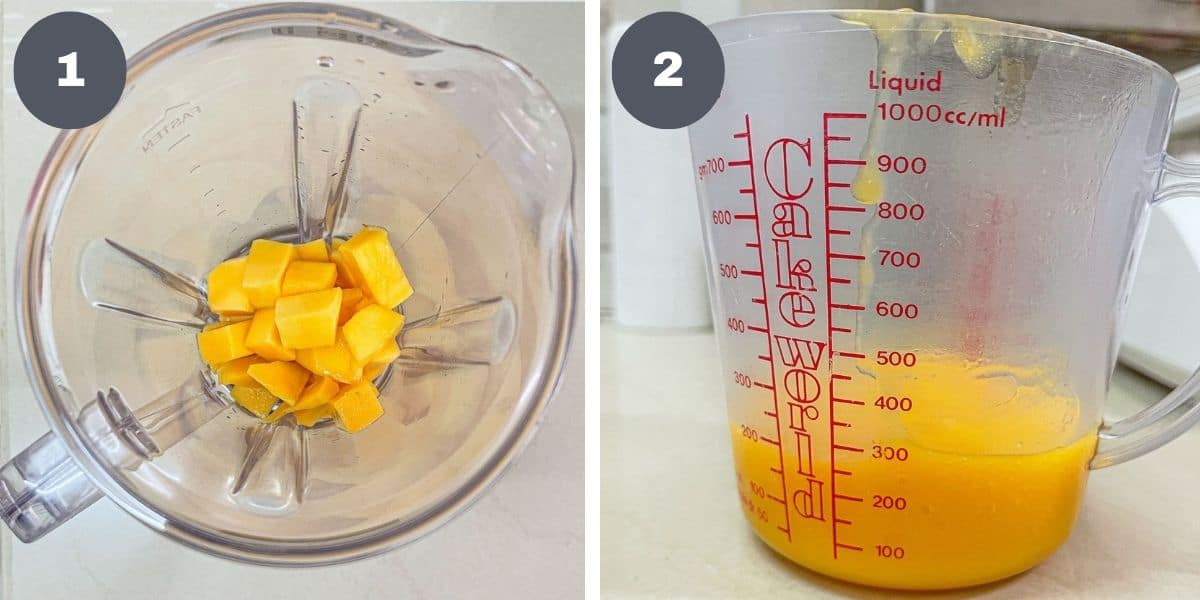
Weigh the cut mango pieces and place them into a food processor or blender and process until smooth (image 1).
Note: You can also strain the puree to remove any mango chunks or pulp.
Measure the pureed mango as required in the recipe card and set aside (image 2).
Step 3: Cook the agar agar. Pour the water into a medium sized pot. Set aside.
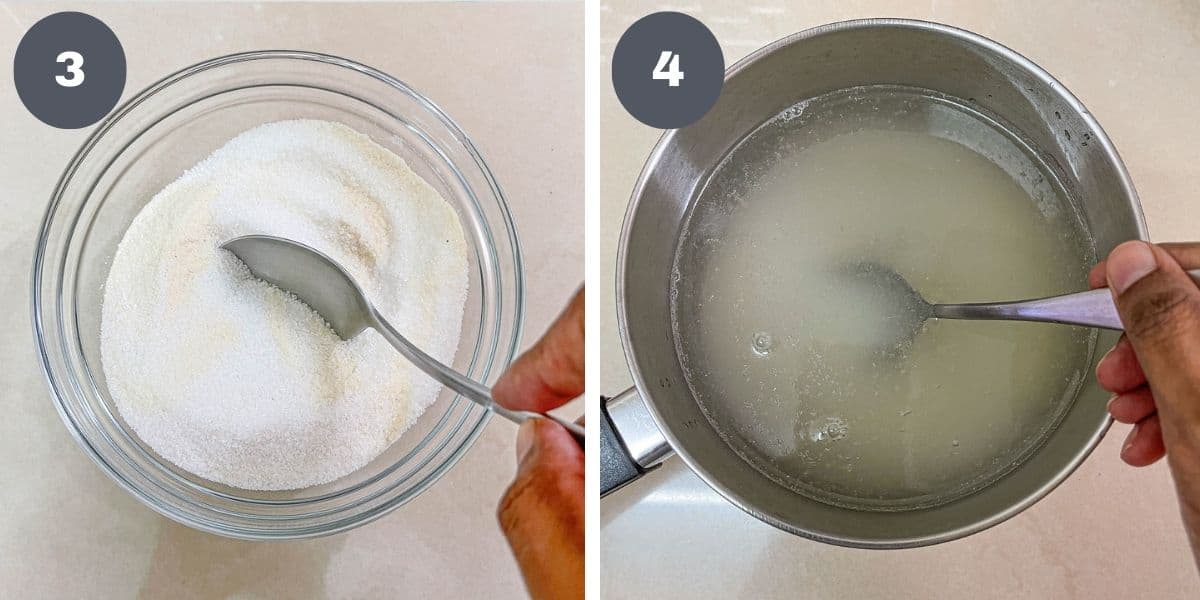
Measure sugar into a bowl. Add the agar agar powder and mix well (image 3).
Note: Mix the powder in sugar helps prevent it from clumping when added to the water.
Pour the agar-agar and sugar mixture into the water. Stir to mix for about 30 seconds (image 4).
Place the pot over low heat and cook the jelly until it starts to boil. Stir constantly and continue cooking until the jelly reaches a rolling boil point.
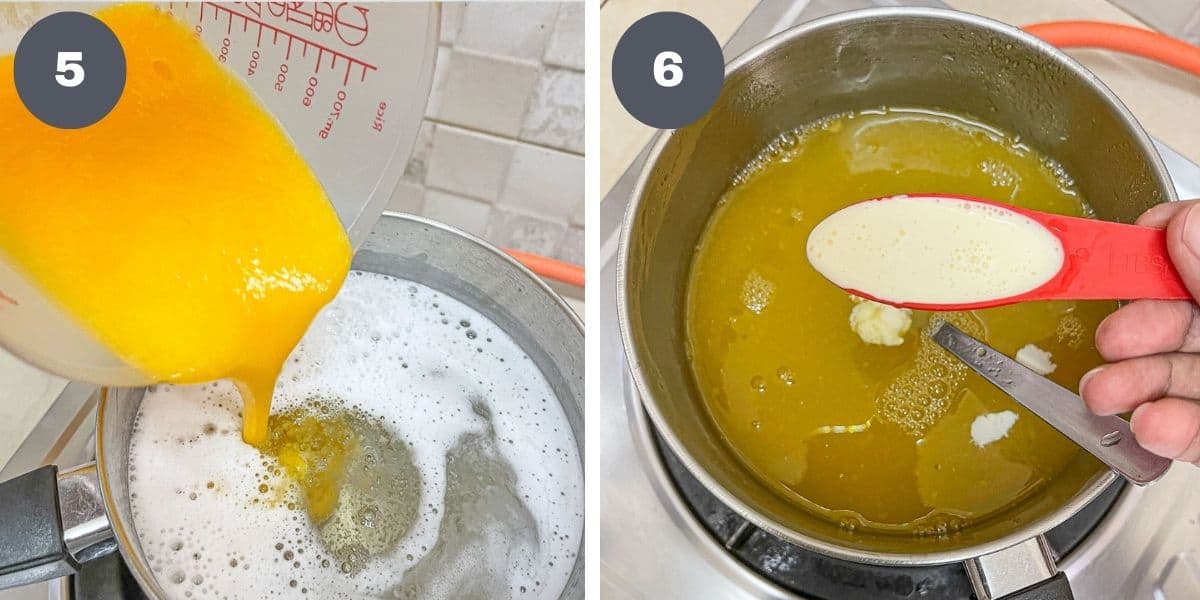
Pour in the mango puree and the lemon juice (image 5). Mix well, and let the mango mixture come to a simmer. Turn off the heat.
Transfer out one third of the jelly mixture into a separate pot. Add the cream to the remaining two thirds of the mango jelly (image 6). Mix well.
Step 4: Assemble the jelly. Start with the cream added portion.
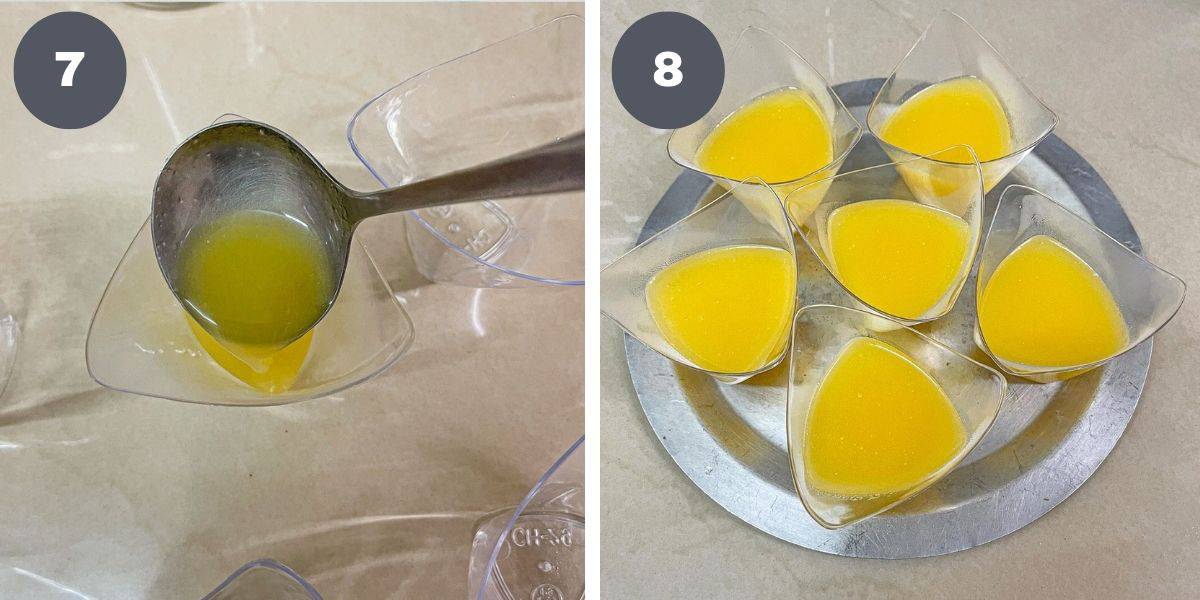
Pour the mango cream jelly into the prepared molds (image 7). Refrigerate to set.
Note: Avoid placing the hot jelly into the fridge straightaway to prevent temperature change in your fridge. Placing the jelly under the fan for a few minutes will help to cool it down quicker.
Check the jelly after about 5 minutes to see if the top of the jelly is set. At this stage, the mango jelly will most likely not have completely set on the inside and that is fine. Suffice if the top surface is set (image 8).
Note: To test, gently press the top of the jelly surface with your finger. If you can feel a thin film formed, you can pour the next layer of jelly.
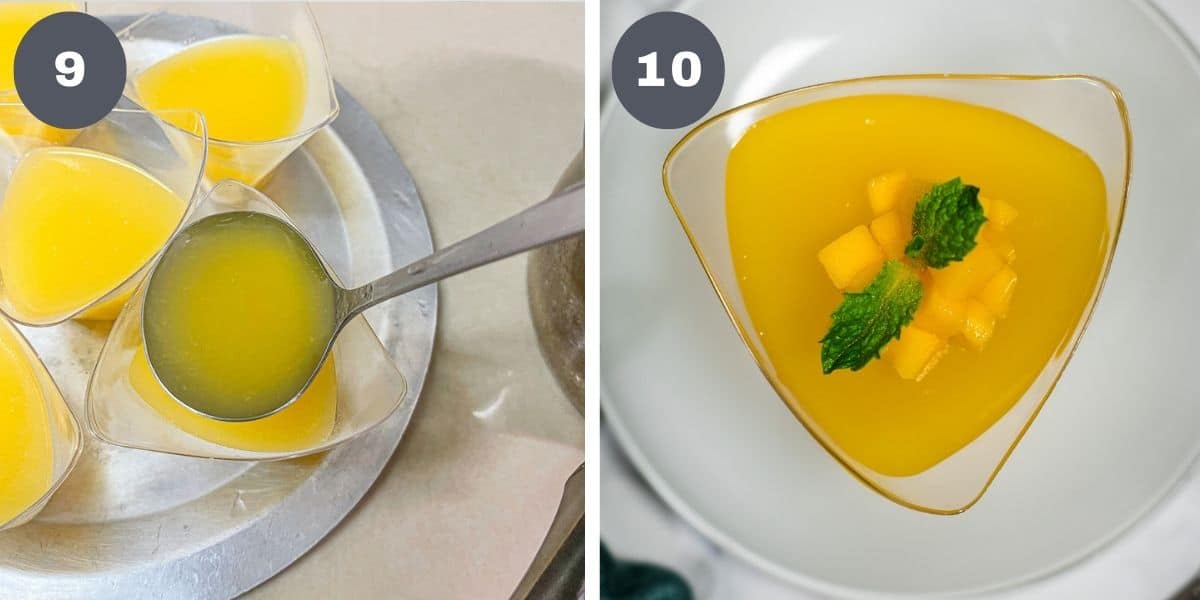
Remove the jellies from the fridge and very gently, pour in the second layer of the mango jelly, this time the portion without the cream in it (image 9).
Note: Use a ladle to pour the jelly and do it very gently to prevent the skin on the bottom jelly layer from breaking.
Return the mango jelly cups into the fridge to set completely, between 2 to 3 hours.
Note: The deeper your molds, the longer it will take for the jelly to set. Test by shaking it gently. If it is still wobbly, the jelly is not set and should be allowed more time.
To serve, chop some fresh mango into small cubes and spoon on the jelly for a fresh delicious topping. Garnish with mint leaves (image 10). The mango cubes are best added before serving and the jelly is best served chilled.
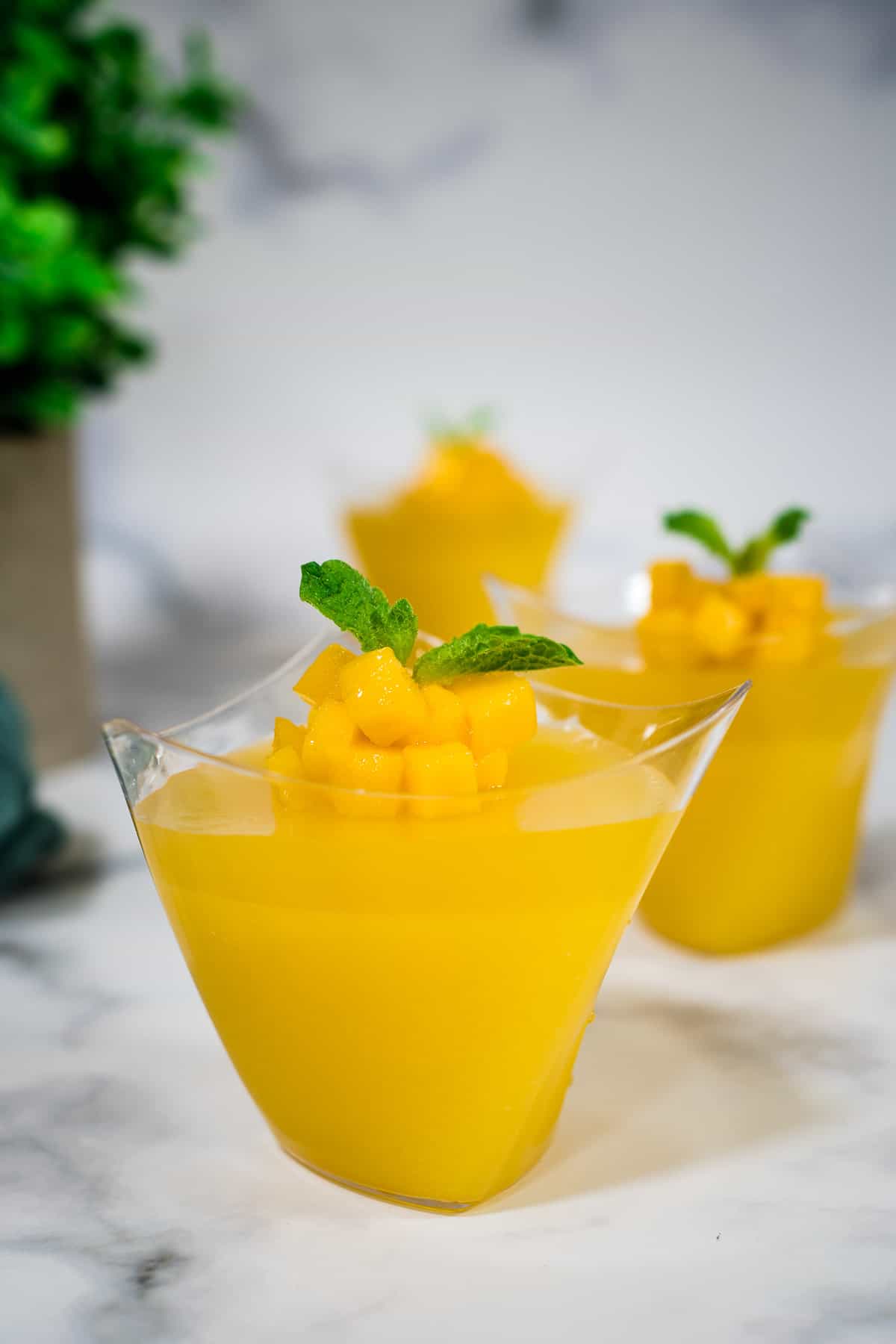
💡Expert Tips
- You can use any type of mango to make this jelly, however, it is best made this variants that do not have too much thread or mango pulp.
- When making layered jellies like this mango jelly as well as my coconut jelly and pandan agar agar, you will have to keep the unpoured jelly solution warm while waiting for each jelly layer to set. This is because the jelly will set at room temperature. One way is to keep heating up the jelly solution intermittently so that it does not cool down too much. Stir the solution so that it does not form a layer of skin on the surface. Keeping the pot covered and placing it on a piece of warm cloth also helps to ensure the jelly remains hot and liquid as you assemble your layered jellies.
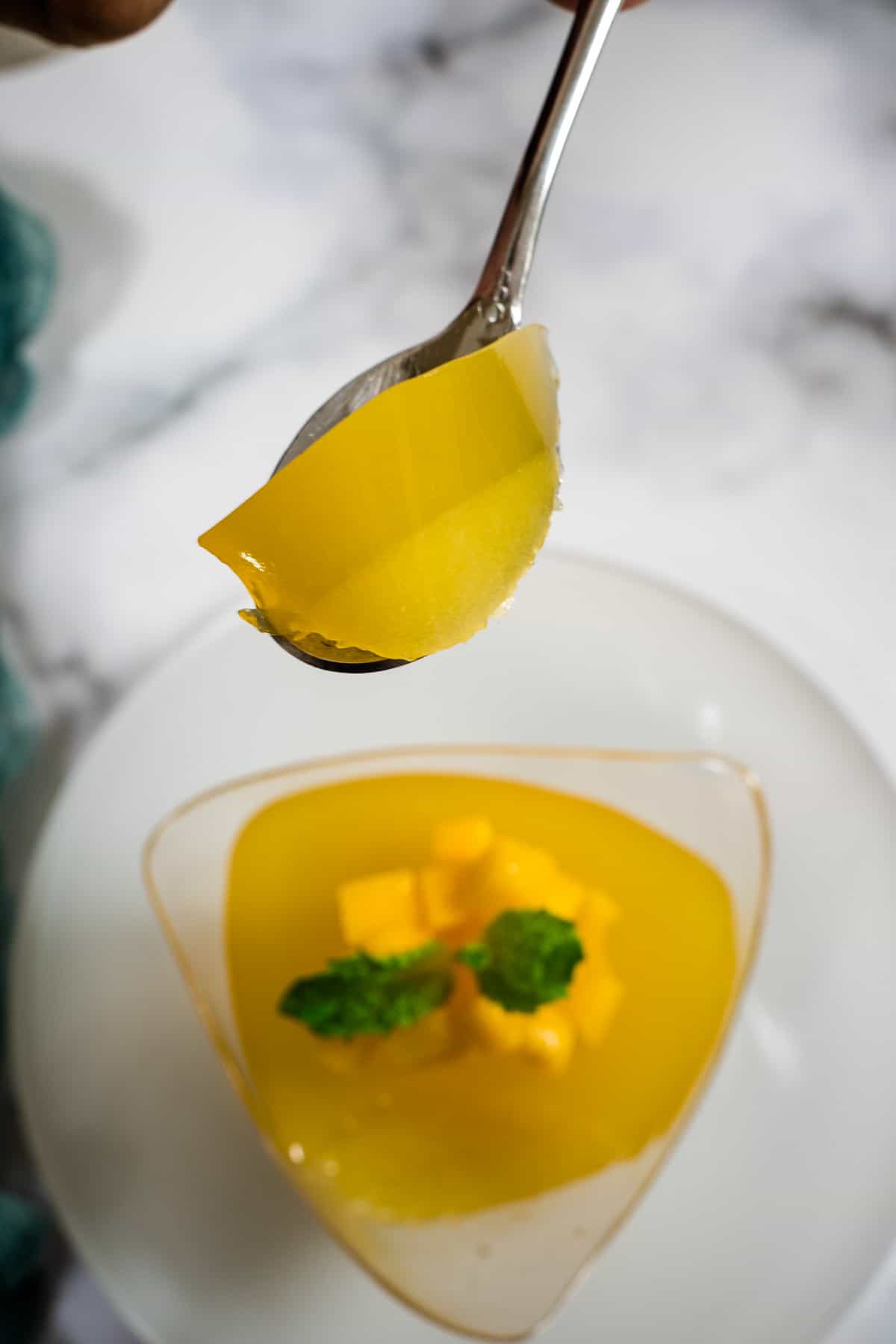
💭FAQs
Test by squeezing the fruit lightly with your hands. If it is very hard, it is not ripe. Ripe mangoes should be firm but slightly soft when squeezed. Avoid overly soft mangoes.
Yes, you can. However, to ensure the jelly sets well, you need to keep the ratio of agar agar powder to liquid measurement to 10g:1 liter. Reduce the water in the recipe by the additional volume of mango puree used to keep to the ratio.
Mango puree can be replaced with mango juice. Do note that you may need to reduce the sugar in the recipe if you are using sweetened mango juice.
This mango jelly should be kept chilled. It can last for a good 4 to 5 days in the refrigerator.
You can serve it plain without any topping. I choose to top mine with small mango cubes. You can also serve the jelly with a dallop of whipped cream or a scoop of vanilla ice cream.
❤️More Recipe You Will Love
Do you like this recipe? Please leave a 5-star ⭐⭐⭐⭐⭐rating in the recipe card below and consider a review further down this page. I would love to hear from you. Thank you!
📖Recipe
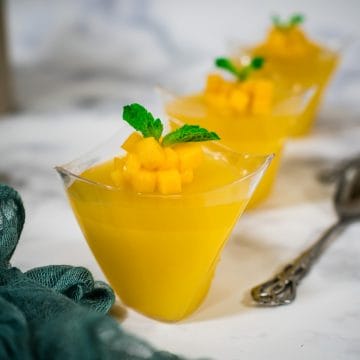
Mango Jelly (Mango Agar Agar)
For best results, use the metrics measurements. US customary measurements have not been tested and are only meant for guide.
Ingredients
- 10 g agar agar powder
- 200 g white sugar
- 700 ml water
- 250 g mango puree (approximately 1 medium sized mango)
- 1 tablespoon lemon juice
- 2 tablespoon heavy cream
Instructions
- Prepare the molds before cooking the jelly. Wash and pat them dry and set aside.
- Peel the mango.
- Cut into cubes and process until fine. Add about 2 or 3 tablespoons of water if necessary. Measure the amount required for the recipe and set aside (see Note 1).
- In a separate bowl, mix the agar agar powder with sugar until well combined (see Note 2).
- Measure water into a medium sized pot and add the sugar-agar agar jelly mixture. Stir for about 30 seconds to disperse the jelly powder.
- Place the pot over low heat and cook until it comes to a rolling boil. Stir constantly to avoid jelly from clumping at the bottom of the pot.
- As soon as the jelly comes to a boil, add the mango puree and lemon juice. Stir well to combine.
- Turn off the heat as soon as the jelly starts to simmer.
- Transfer two thirds of the jelly into a separate measuring jug or pot. Add cream to it. Keep the remaining one third covered to avoid it from setting (see Note 3).
- Pour the cream mixed mango jelly solution into the prepared molds. Let them cool (see Note 4).
- Check the jelly in the refrigerator after about 5 to 10 minutes. Touch the surface to check if it has set. The jelly will still be wobbly at this stage and that is fine, suffice if the top surface is set.
- Remove the mango jelly cups from the fridge. Spoon the remaining jelly solution onto the first jelly layer very gently to avoid the layer from breaking.
- Return the jelly cups to the fridge to continue to set completely, approximately 2 to 3 hours (see Note 5).
- To serve, cut some fresh mango into small cubes and add to the jelly. Garnish with mint leaves.
- Keep leftovers refrigerated.
Notes
- You can also strain the puree to remove any mango chunks or pulp.
- Mix the powder in sugar helps prevent it from clumping when added to the water.
- Keep the unpoured jelly solution warm while waiting for first jelly layer to set to prevent it from setting in the pot. Keep it covered and heat up intermittently. Stir to prevent a layer of skin from forming on the top.
- Avoid placing the hot jelly into the fridge straightaway to prevent temperature change in your fridge. Placing the jelly under the fan for a few minutes will help to cool it down quicker.
- The deeper your molds, the longer it will take for the jelly to set. Test by shaking it gently. If it is still wobbly, the jelly is not set and should be allowed more time.
- You can use any type of mango to make this jelly, however, it is best made this variants that do not have too much thread or mango pulp.
- Undercooked jelly will not set properly. Make sure to cook the jelly solution until the agar agar powder is fully dissolved.


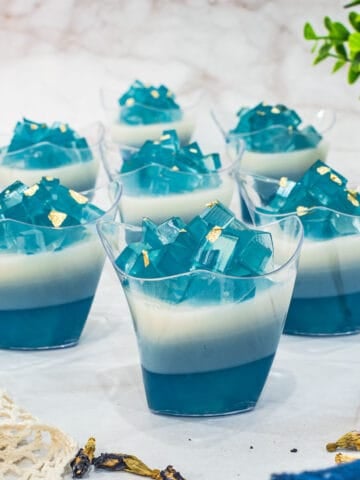

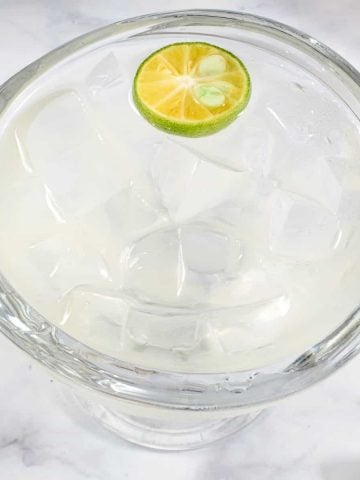
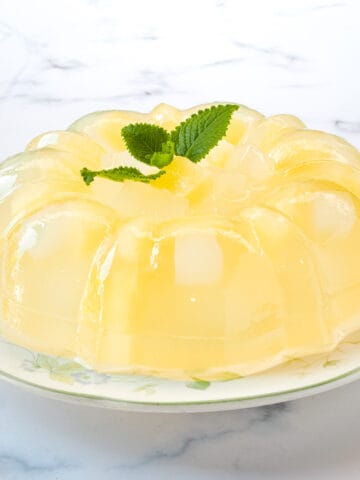
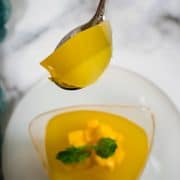
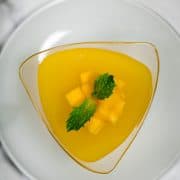
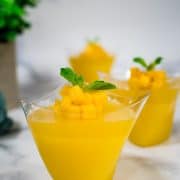
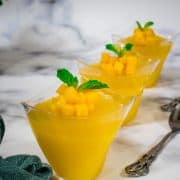
Leave a Reply